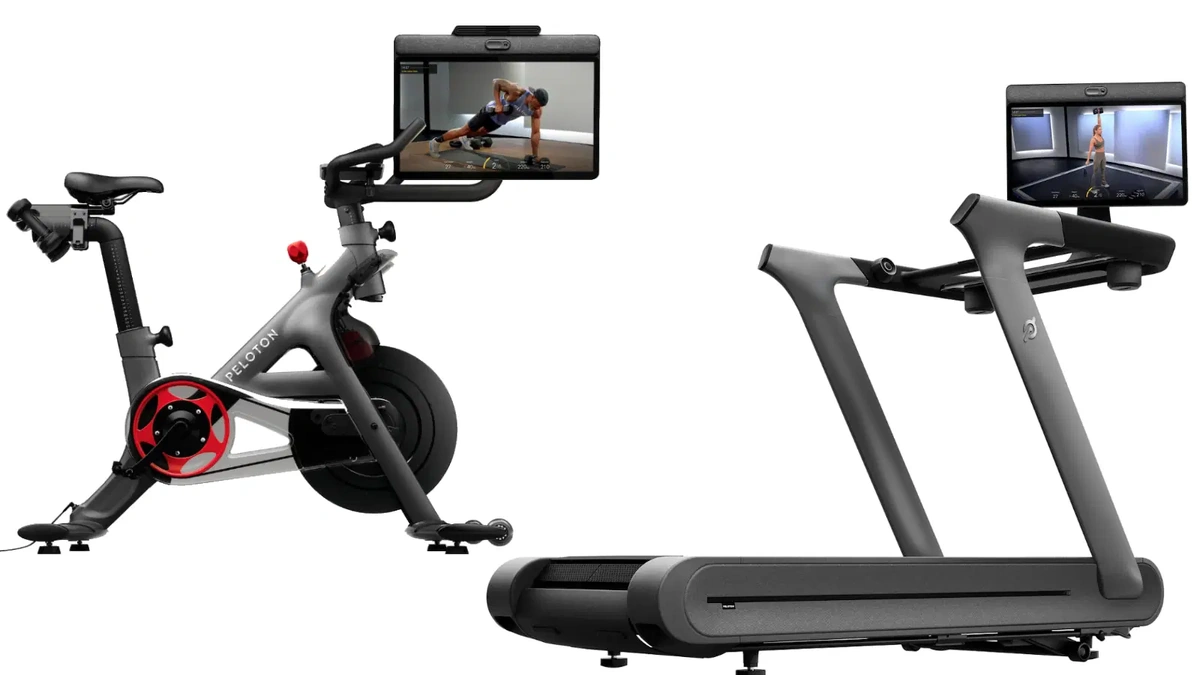Let’s be honest, staring at that Peloton screen day after day can start to feel…well, monotonous. You crush those cycling classes, build that endurance, but are you really getting a well-rounded workout? I initially thought I was doing enough, but then I realized I was neglecting some crucial muscle groups. That’s where cross training comes in, and it could be the missing piece in your fitness puzzle. But, not all cross-training is created equal, especially when you’re trying to complement your Peloton routine. What fascinates me is how to strategically integrate it for maximum impact.
Why Cross Training Matters for Peloton Riders

Here’s the thing: Peloton excels at cardio and lower body strength. But what about your upper body, your core stability, and overall flexibility? Neglecting these areas can lead to imbalances, injuries, and plateaus in your Peloton performance. So, why is it important? Think of your body as a finely tuned machine. If one part is weak, the whole system suffers. Cross training strengthens those weaker links, making you a more resilient and powerful rider. And that’s not just my opinion. A 2018 study in theJournal of Strength and Conditioning Researchshowed that cross-training improves athletic performance and reduces injury risk.
Building Your Peloton Cross Training Plan: A Step-by-Step Guide
Alright, let’s get practical. How do you actually incorporate cross training into your Peloton routine? Here’s my step-by-step guide, based on what’s worked for me and countless others:
- Assess Your Weaknesses: Honestly evaluate where you’re lacking. Are your arms noodles? Is your core nonexistent? This will dictate your focus. A common mistake I see people make is assuming they’re strong everywhere just because they can crush a 45-minute Power Zone ride.
- Choose Your Activities: Opt for activities that target your weaknesses. Think strength training (weights, bodyweight exercises), yoga (flexibility and balance), swimming (low-impact cardio and full-body engagement), or even hiking. A great addition is incorporating strength and conditioning exercises.
- Structure Your Week: Don’t just haphazardly throw in a random workout here and there. Plan specific days for cross training. I recommend 2-3 sessions per week, lasting 30-60 minutes each.
- Listen to Your Body: This is crucial! Don’t push yourself too hard, especially when starting. Rest and recovery are just as important as the workouts themselves. Overtraining can actually hinder your progress.
Let me rephrase that for clarity: listen to your body! It’s trying to tell you something. Ignoring pain is a recipe for disaster. And remember to hydrate.
The Best Cross Training Exercises for Peloton Enthusiasts
So, what specific exercises should you be doing? Here are some of my favorites, targeting the areas that Peloton often neglects:
- Upper Body: Push-ups (various variations), dumbbell rows, overhead presses, bicep curls, tricep dips.
- Core: Planks (various variations), Russian twists, dead bugs, bicycle crunches.
- Flexibility: Yoga poses (downward dog, warrior poses, child’s pose), stretching (hamstring stretches, quad stretches, shoulder stretches).
What fascinates me is the variety. You don’t have to stick to the same boring routine. Mix it up, experiment, and find what you enjoy! And remember to prioritize proper form over heavy weight. A common mistake I see is people ego-lifting and sacrificing technique. This not only increases the risk of injury but also reduces the effectiveness of the exercise. Consider exercises that improve your muscle endurance .
Avoiding Common Cross Training Mistakes
Now, let’s talk about some pitfalls to avoid. Because, let’s be honest, it’s easy to mess this up.
- Ignoring Warm-ups and Cool-downs: This is a cardinal sin! Always prepare your body for exercise and help it recover afterward.
- Overtraining: As I mentioned earlier, rest is crucial. Don’t try to do too much, too soon.
- Neglecting Proper Form: Focus on quality over quantity. It’s better to do fewer reps with good form than many reps with bad form. Consider using a mirror to monitor your form.
- Not Listening to Your Body: I can’t stress this enough! Pay attention to pain and adjust your workouts accordingly.
- Not Diversifying: Ensure a well-rounded fitness routine.
The Mental Game: How Cross Training Boosts Your Peloton Motivation
But cross training isn’t just about physical benefits. It can also significantly boost your mental game. Let’s be honest, doing the same thing over and over again can lead to burnout. Cross training provides variety, challenges you in new ways, and keeps things fresh and exciting. It can also help you overcome plateaus and reignite your passion for fitness. You might consider this a training modality of its own, just for the mind.
So, consider strength training exercises to add to your routine. Another option is to consider a new piece of workout equipment.
FAQ: Your Peloton Cross Training Questions Answered
Frequently Asked Questions
How often should I cross-train with my Peloton workouts?
2-3 times per week is generally recommended, but listen to your body.
What if I don’t have access to weights?
Bodyweight exercises are a great alternative! Push-ups, planks, squats, and lunges are all highly effective.
What if I’m short on time?
Even 20-30 minute cross-training sessions can make a difference. Focus on compound exercises that work multiple muscle groups.
Is yoga a good form of cross-training for Peloton riders?
Absolutely! Yoga improves flexibility, balance, and core stability, all of which are beneficial for Peloton riders.
What about swimming?
Swimming is a fantastic low-impact option that works your entire body.
In conclusion: Stop thinking of Peloton as the only thing you need. It’s a fantastic tool, but it’s even more powerful when combined with smart, strategic cross training . Embrace the variety, challenge yourself in new ways, and unlock your full potential. It’s time to think about your exercise routine in a more comprehensive way.




